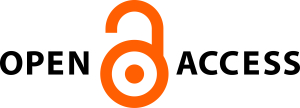Perceived Benefits and Pitfalls of Telecommuting Practices: Information Technology Professionals' Perspectives
Abstract
The aim of this paper is to explore the perceived benefits and pitfalls of telecommuting from the perspective
of Nepalese IT professionals. A network sampling approach was used to collect the data from the top 10 IT
companies of Nepal. The questionnaire was distributed to 250 telecommuters and completed by 193
(77.20%). Telecommuters can reap many benefits as a result of telecommuting practices. They can better
manage their time and schedules, improve their quality of life, and arrange for the supervision of family
members. Telecommuting provides them with the flexibility they require to perform their jobs effectively.
By implementing such practices, telecommuters can save money on transportation as well as time and
energy spent commuting to work. Because of lower stress levels, increased motivation, professional
flexibility, a better working environment, and independence, they can gain access to global talent, reduce
tardiness, improve health, and pursue a hobby or a profession. Telecommuters may encounter a variety of
pitfalls as a result of telecommuting practices. Because of a lack of face-to-face communication, regular
supervision, and constant interaction, they may feel isolated and frustrated. They could be required to work
in a detached or separate society. They may struggle to keep their professional and personal lives separate.
They must also give up their living space and forego certain job perks. Workplace changes can create
difficulties to perform well. To reap the benefits of telecommuting, today's companies must avoid such
pitfalls. Companies must create new and innovative systems to make them work and train employees to be
comfortable with such practices. They should devise a method for monitoring and tracking the process, and
providing needed guidance.


